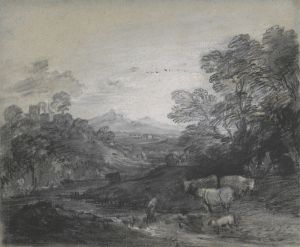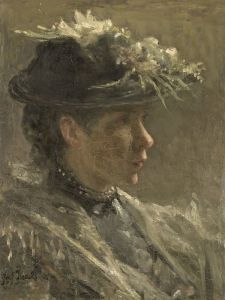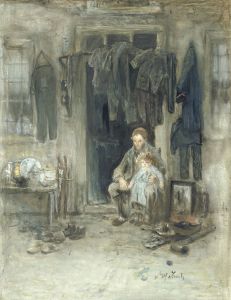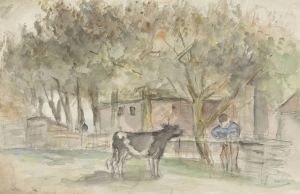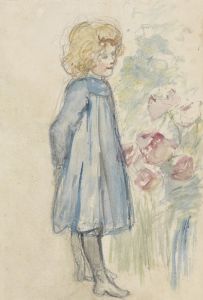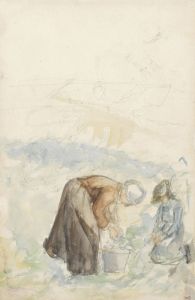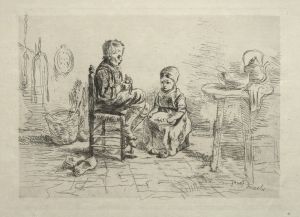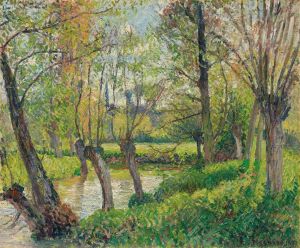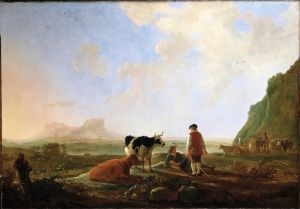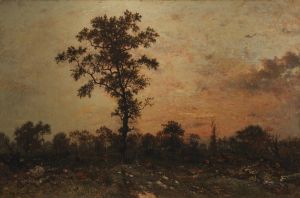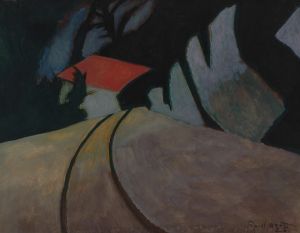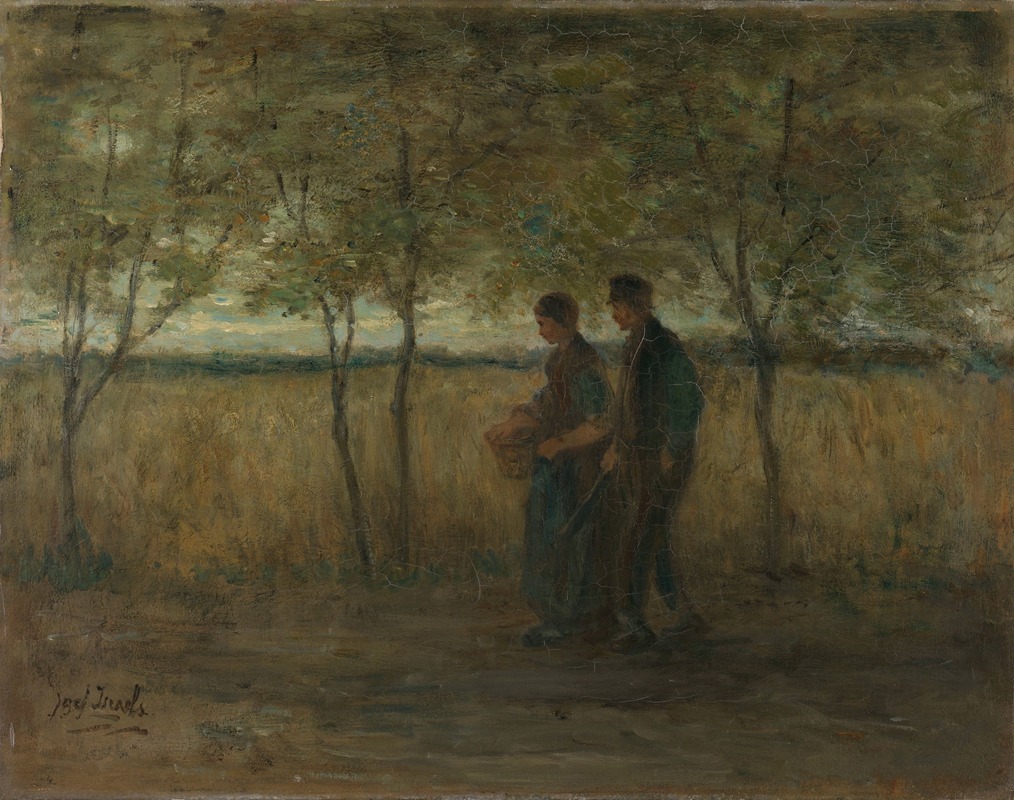
‘Turning homewards’
A hand-painted replica of Jozef Israëls’s masterpiece ‘Turning homewards’, meticulously crafted by professional artists to capture the true essence of the original. Each piece is created with museum-quality canvas and rare mineral pigments, carefully painted by experienced artists with delicate brushstrokes and rich, layered colors to perfectly recreate the texture of the original artwork. Unlike machine-printed reproductions, this hand-painted version brings the painting to life, infused with the artist’s emotions and skill in every stroke. Whether for personal collection or home decoration, it instantly elevates the artistic atmosphere of any space.
Jozef Israëls, a prominent Dutch painter of the 19th century, is renowned for his poignant depictions of peasant life and his contributions to the Hague School, an art movement known for its realistic portrayal of rural scenes and everyday life. One of his notable works, "Turning Homewards," exemplifies his ability to capture the emotional depth and narrative richness of his subjects.
"Turning Homewards" is a painting that reflects Israëls' deep empathy for the working class and his skill in conveying the quiet dignity of their lives. The painting typically features a scene of peasants or fishermen returning home after a day's labor, a theme that Israëls frequently explored in his work. His focus on the everyday struggles and resilience of ordinary people resonated with audiences and critics alike, earning him a reputation as the "Dutch Millet," in reference to the French painter Jean-François Millet, who similarly depicted rural life.
Israëls' technique in "Turning Homewards" is characterized by a subdued color palette and a masterful use of light and shadow, which imbue the scene with a sense of realism and emotional depth. The figures in the painting are often rendered with a softness that highlights their humanity and the intimacy of their shared experience. Israëls' brushwork is both detailed and expressive, capturing the textures of the clothing and the landscape, while also conveying the mood of the scene.
The composition of "Turning Homewards" typically draws the viewer's eye along a path or road, leading towards a distant horizon or a warmly lit home, symbolizing safety, rest, and the end of a day's toil. This journey motif is central to the painting's narrative, evoking themes of perseverance, hope, and the universal human experience of seeking refuge and comfort.
Israëls' work, including "Turning Homewards," was influenced by his exposure to the social and economic changes of his time, particularly the hardships faced by the rural poor. His paintings often served as a commentary on these conditions, inviting viewers to reflect on the lives of those who toiled in obscurity. This social consciousness, combined with his technical skill, made Israëls a key figure in the Hague School and a significant influence on later generations of artists.
"Turning Homewards" is a testament to Jozef Israëls' ability to blend narrative and emotion with technical precision, creating works that are both visually compelling and deeply moving. His legacy as a painter who championed the dignity of ordinary people continues to be celebrated, and his works remain an important part of the canon of 19th-century European art. Through paintings like "Turning Homewards," Israëls not only captured the essence of his subjects but also offered a window into the broader social and cultural landscape of his era.





